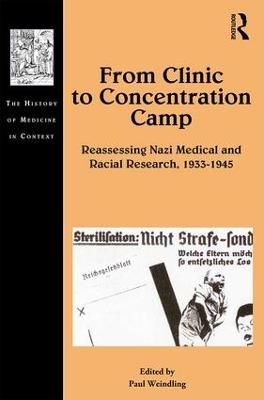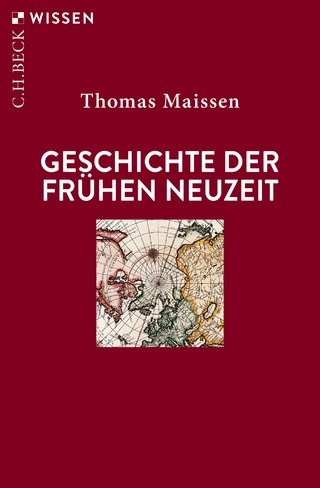
From Clinic to Concentration Camp
Routledge (Verlag)
978-1-4724-8461-1 (ISBN)
Paul Weindling is Research Professor in the History of Medicine at Oxford Brookes University, UK. His research covers evolution and society, public health, and human experimentation post-1800. He has especial interests in eugenics, human experiments, corporate philanthropies in the field of international health, and medical refugees from Nazi Germany. He has published on victims and survivors of Nazi experiments and develops research on the thousands of victims and their body parts.
List of figures
Notes on contributors
Acknowledgements
PART ONE: Contexts
1. Introduction: a new historiography of the Nazi medical
experiments and coerced research
PAUL WEINDLING
2. The use and abuse of medical research ethics: the German
Richtlinien/guidelines for human subject research as an
instrument for the protection of research subjects –
and of medical science, ca. 1931–1961/64
VOLKER ROELCKE
3. The Society of German Neurologists and Psychiatrists and
research in the context of eugenics and "euthanasia"
HANS-WALTER SCHMUHL
PART TWO: Clinics and the sciences
4. Research on the boundary between life and death: coercive
experiments on pregnant women and their foetuses during
National Socialism
GABRIELE CZARNOWSKI AND SABINE HILDEBRANDT
5. August Hirt and the supply of corpses at the Anatomical
Institute of the Reichsuniversität Strassburg (1941–1944)
RAPHAEL TOLEDANO
6. Nazi anthropology and the taking of face masks: face and
death masks in the anthropological collection of the
Natural History Museum, Vienna
MARGIT BERNER
7. Beyond Spiegelgrund and Berkatit: human experimentation
and coerced research at the Vienna School of Medicine,
1939 to 1945
HERWIG CZECH
8. Murdering the sick in the name of progress? The Heidelberg
psychiatrist cart Schneider as a brain researcher and
‘therapeutic idealist’
MAIKE ROTZOLL AND GERRIT HOHENDORF
9. Der Kinderfachabteilung vorzuschlagen: the selection and elimination
of children at the Youth Psychiatric Clinic Loben (1941–45)
KAMILA UZARCZYK
PART THREE: Concentration camps
10. Children as victims of medical experiments in concentration
camps
ASTRID LEY
11. The story of how the Ravensbrück "Rabbits" were captured
in photos
ALEKSANDRA LOEWENAU
12. Rascher and the "Russians": human experimentation on Soviet
prisoners in Dachau – a new perspective
NICHOLA FARRON
13. Heißmeyer’s forgotten victims: tuberculosis experiments on
adults in Neuengamme 1944–45
ANNA VON VILLIEZ
PART FOUR: Legacies
14. From witness to indictee: Eugen Haagen and his court hearings
from the Nuremberg Medical Trial (1946–47) to the Struthof
Medical Trials (1952–54)
CHRISTIAN BONAH AND FLORIAN SCHMALTZ
15. Informed testimonies: physicians’ accounts of Nazi medical
experiments in the context of early Czechoslovak war crimes
investigations, 1945–48
MICHAL V. SIMUNEK
16. Post-war legacies, 1945–2015: victims, bodies, and brain tissues 000
PAUL WEINDLING
Index
| Erscheinungsdatum | 15.07.2017 |
|---|---|
| Reihe/Serie | The History of Medicine in Context |
| Zusatzinfo | 1 Tables, black and white; 1 Line drawings, black and white; 17 Halftones, black and white; 21 Illustrations, black and white |
| Verlagsort | London |
| Sprache | englisch |
| Maße | 156 x 234 mm |
| Gewicht | 703 g |
| Themenwelt | Geschichte ► Allgemeine Geschichte ► Neuzeit (bis 1918) |
| Studium ► 1. Studienabschnitt (Vorklinik) ► Med. Psychologie / Soziologie | |
| Studium ► Querschnittsbereiche ► Geschichte / Ethik der Medizin | |
| Naturwissenschaften | |
| Sozialwissenschaften ► Soziologie | |
| ISBN-10 | 1-4724-8461-4 / 1472484614 |
| ISBN-13 | 978-1-4724-8461-1 / 9781472484611 |
| Zustand | Neuware |
| Haben Sie eine Frage zum Produkt? |
aus dem Bereich


